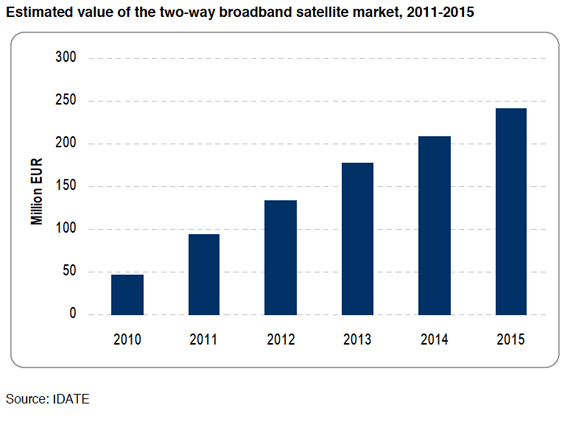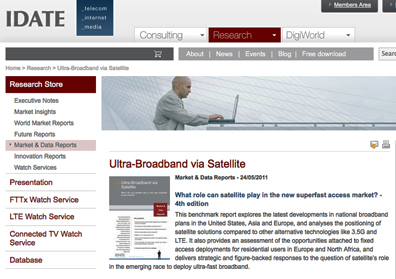“Most of the major countries of Europe, North America and Asia have adopted national plans for the large-scale rollout of ultra-fast broadband networks”, said Maxime Baudry, the head of project and Co- Head Satellite Practice at IDATE. “In most instances, however, the technological choices are geared towards deploying FTTx, combined with LTE. Only a handful of countries, including France and Australia view satellite as a credible alternative for delivering superfast services of around 50 Mbps downlink by 2015.”
Satellite technology appears to be operating at two speeds today: with the latest developments that will enable certain providers to deliver downlink speeds of up to 10 Mbps, it is theoretically in a position to compete with DSL in certain areas where DSL subscribers are too far from the DSLAM to have high-speed access, with bandwidth that is often below 2 Mbps. On the ultra-fast broadband front, however, satellite is lagging behind: while large-scale rollouts of FTTx and LTE are expected between 2011 and 2020, delivering download speeds of 30-70 Mbps, the most advanced satellite developments make it possible to supply “only” 50 Mbps, and even then not before 2015 at the earliest. Because of this sluggish pace, which needs to be set against the thriving momentum in the terrestrial telecom market, ultra-fast broadband via satellite runs the risk of not becoming available until LTE is already widely deployed across the various markets (in particular thanks to infrastructure-sharing schemes) which means it will already have lost a sizeable number of potential subscribers. Satellite broadband market expected to grow by 34% annually between now and 2015.

Between 2010 and 2015, IDATE predicts that the number of broadband satellite customers in the Europe/North Africa region will increase by an annual rate of 34 percent, to reach a total 800,000 subscribers by 2015, compared to close to 123,000 at the end of 2010. The biggest progress will be seen in North Africa which, unlike Europe, does not have a robust fixed or mobile infrastructure. IDATE therefore estimates that the growth potential for a broadband satellite offer in this region is very strong, provided that price points are tailored to the economic realities in the different countries. The future success of a service in this region will also depend on how it positions itself with respect to competing wireless/cellular technologies which are enjoying a very healthy momentum today.


